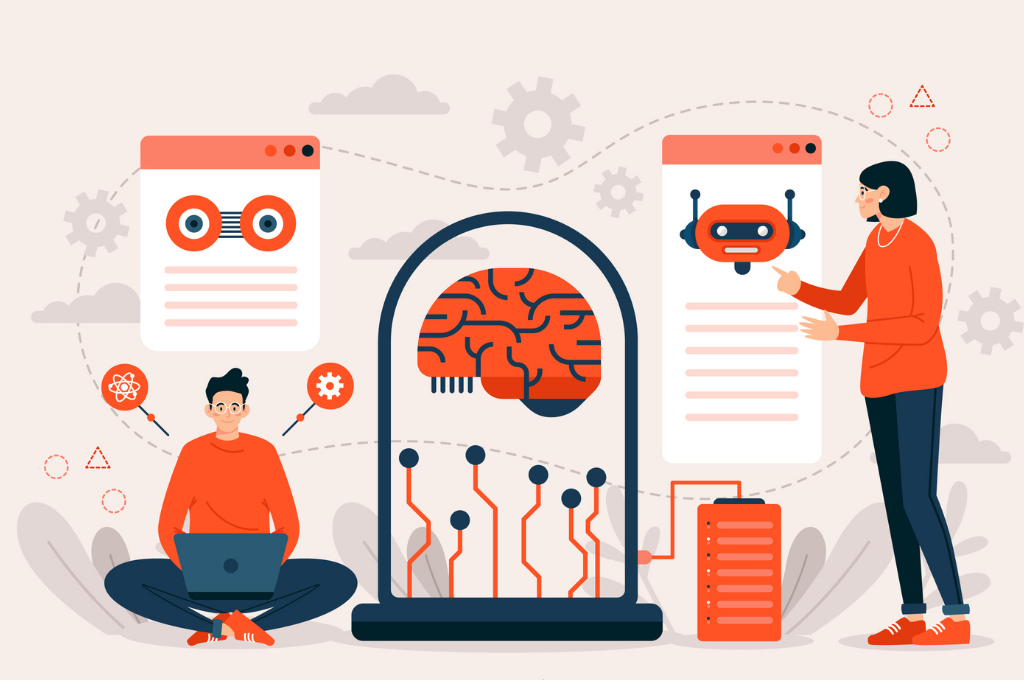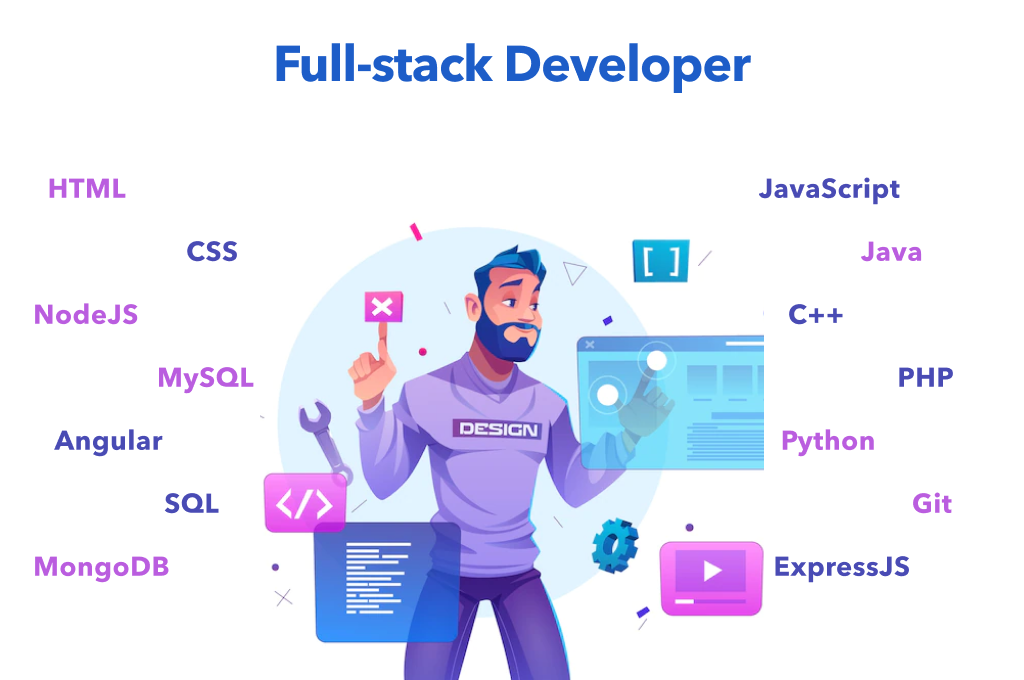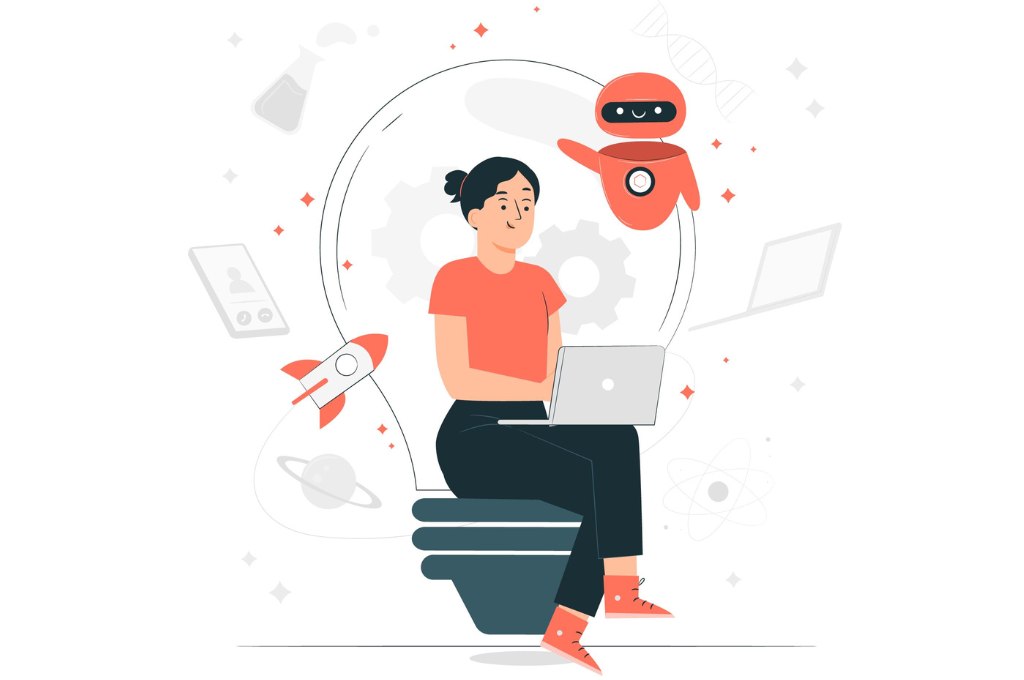The phrase “Artificial Intelligence” is still used as if it's a future technology. We are already living in a time of Artificial Intelligence, in 2021. We are already living within the Age of Artificial Intelligence, from the robotic toys our kids buy to the recommendation systems that analyze our interests in media and ads.
The phrase "machine learning" is being bandied about a lot these days. As if understanding artificial intelligence wasn't confusing enough! This blog will provide you with real-world examples of concepts like machine learning and artificial intelligence that you may find Greek!
What Is Artificial Intelligence?
Artificial intelligence is human-programmed intelligence that performs human tasks. AI Systems that function as ‘thinking machines’ are created through the incorporation of this artificial intelligence and machine learning into computer systems. Each of these pieces is increasingly important in the overall AI System's intelligence.
Three qualities characterize these AI systems: intentional, intelligent, and adaptive.
-
Intentional- AI systems are constructed by humans to make decisions based on historical data or real-time information. Predetermined responses are embedded in the AI systems.
-
Intelligent- The ability to make intelligent decisions with AI systems is facilitated by combining machine learning and data analytics. AI isn't intelligent like a human being. Human intelligence is closest to what a machine can approximate.
-
Adapt- The AI systems compile information and make decisions based on compiling and adapting to new information. AI systems can improve the outcome of decision-making with data they learn from real-time data.
What Is Machine Learning?
Machine Learning is a form of artificial intelligence that incorporates automatic learning from the environment so that the system can make better decisions by applying that knowledge. Data is described and improved in iteratively learning, describing and improving algorithms used by Machine Learning to predict outcomes better. Statistical techniques are used by these algorithms to spot patterns so actions can be taken.
Unsupervised, supervised and reinforcement learning algorithms are three types of machine learning algorithms.
-
Supervised- Using labeled examples and supervised machine learning algorithms, we can predict the future using knowledge gained from the past. This learning algorithm makes predictions about output values by analyzing a known training dataset.
-
Unsupervised- If the data used to train a machine-learning algorithm is neither classified nor are labeled, unsupervised machine learning algorithms used. The study of unsupervised learning investigates how systems can represent unknown structures using functions inferred from unlabeled data.
-
Reinforcement- Algorithms that use reinforcement machine learning interact with their environment by detecting errors and rewarding or punishing them. Reinforcement learning is characterized by trial-and-error search, as well as delayed rewards. The optimal behavior in a given context can be automatically determined by machines and software agents, to maximize their performance.
Significant Pros and Cons Of AI and Machine Learning
Applications involving artificial intelligence systems are immense and are capable of revolutionizing any industry. Take a look.
- Error reduction
Oftentimes, humans make mistakes, which is why they are called “human error”. Programming correctly prevents computers from making these mistakes, however. A set of algorithms is applied to previously collected information to make an artificial intelligence-based decision. Errors and Cybersecurity mistakes are reduced and a greater degree of precision can be achieved by reduction of errors.
Example: The majority of human errors have been eliminated from weather forecasting using AI.
- Assisting in repetitive tasks
The repetitive tasks that we perform in our everyday work include sending emails, checking for errors in certain documents, and so on. Automating these mundane tasks with artificial intelligence can make them more productive and even free people up to spend more time on more creative tasks with personal narrative ideas.
Example: A bank owner is often tasked with many repetitive tasks such as verifying documents before issuing a loan. Through AI Cognitive Automation, both the owner and the customers will benefit from the streamlined process of document verification.
There is always a darker side to every bright side. Likewise, AI and ML also have some shortcomings. Take a look.
- Super- Costly
The software and hardware need to be updated every day as AI advances. For machines to function properly, they must be repaired and maintained, adding to their costs. Machines are complex, so constructing them requires a huge budget.
- Takes away human jobs
Robots are replacing most repetitive tasks (as well as other works) with AI, which will result in a drastic decline in human interference at work, causing a major decline in employment standards. Artificial intelligence (AI) robots can do the same kind of work as humans more efficiently and are becoming more commonplace in organizations.
Examples Of Artificial Intelligence & Machine Learning In Use Today
Technology and business circles discuss artificial intelligence a lot today. There are many experts and industry analysts who believe that machine learning and AI are the future, but if we take a look around, we believe they're not a thing of the past, but the present.
Whether it is Siri, Watson, or Alexa, we are all connected to AI and ML in some way. Here are some examples.
- Tesla
AI and ML are evolving in both smartphones and automobiles. The Tesla is a brand you should know about if you are a car buff. There is no better automobile available today. Not only has the car won many awards, but it also has advanced capabilities such as self-driving and predictive technology.
Those who are technology geeks and wish to own a car like the ones portrayed in Hollywood films should consider Tesla. Thanks to over-the-air updates and machine learning; it keeps getting smarter each day.
- Siri
With the iPhone and iPad, Siri is the most popular personal assistant. Each day, the user interacts with a friendly voice-activated assistant. We can rely on her assistance with finding information, finding directions, sending messages, making voice calls, opening applications, and adding events to the calendar.
By machine learning from natural language questions, Siri grows smarter. The device certainly stands out as a great example of machine learning capabilities.
- Netflix
There is no need to introduce Netflix - it is a widely popular online video service that makes recommendations based on consumer reactions, interests, and choices. By examining several records, the technology can provide movie recommendations based on what you liked and what you reacted to in the past.
The system becomes more intelligent as time passes. Using this technology only has one disadvantage - small movies don't get noticed while big movies grow and flourish on the platform. The software is still improving, and it continues to learn and become more intelligent.
- Uber & UberEATS
This tech giant owes its success to machine learning. The cab's distance from your given location is determined by ML, from estimating the time to estimating the time. This is done through algorithms. It can do this by analyzing the previous data and extrapolating it to the present circumstances. UberEATS also operates similarly. The delivery time is estimated by analyzing a variety of factors, including food preparation time. How cool is that?
- Echo
As Echo becomes smarter and has more features, Amazon launched it. By using the Alexa Voice Service, the device can assist you in searching the web, scheduling appointments, shopping, controlling lights, switches, and thermostats, answering questions, reading audiobooks, reporting traffic and weather, providing information about local businesses, providing sports scores, and more.
- Boxever
In the travel industry, Boxever uses machine learning for enhancing customer experiences and conveying micro-moments or interactions with customers. By leveraging machine learning and Artificial Intelligence, Boxever does a significant job of improving customer engagement, helping customers to make memories throughout the journey.
- Spotify
Do you know how it feels to play one track and get five random tunes you would never have encountered by yourself? Spotify does this for you.
The way Spotify uses ML is much like the way every other online media brand does. There are around 30 songs released each week, which you might enjoy. The playlist is sent straight to the user's inbox. The algorithms use ML to analyze your activities and analyze which songs you have listened to previously to find the ones that are similar to your taste.
ML products from Google, including Google Assistant and Google Camera, are already making a significant impact in the world. However, it recently rolled them out to Gmail and Google Photos as well. Smart reply is now built into Gmail, and it suggests small replies to your emails based on the content they contain. As you are typing the email, Gmail provides you with suggestions, such as greetings or complete sentences.
- Pandora
Pandora is the most sought-after tech solution on the market. You could also call it music's DNA. Expert musicians analyze each song according to 400 musical characteristics. Furthermore, the system is good at recommending songs that people will never notice regardless of their likes, based on their track record.
- Infervision
Infervision makes use of machine learning and artificial intelligence to save lives. Chinese radiologists are unable to keep up with the demand for reviewing 1.4 billion CT scans to check for lung cancer early signs each year because there aren’t enough qualified personnel.
Every day, radiologists must review hundreds of scans, a tedious task that can lead to human error due to fatigue. With Infervision, radiologists can perform cancer diagnosis more accurately and efficiently with more advanced algorithms.
The Takeaway!
You are likely to have used (and hopefully benefited from) AI and ML if you searched on Google for the term “artificial intelligence” and found this article. Artificial intelligence has an uncountable number of impacts on virtually everything we do. Artificial intelligence and Machine Learning are gaining popularity at an accelerating rate; improving customer experiences while influencing how we live, interact, and interact with others!





















